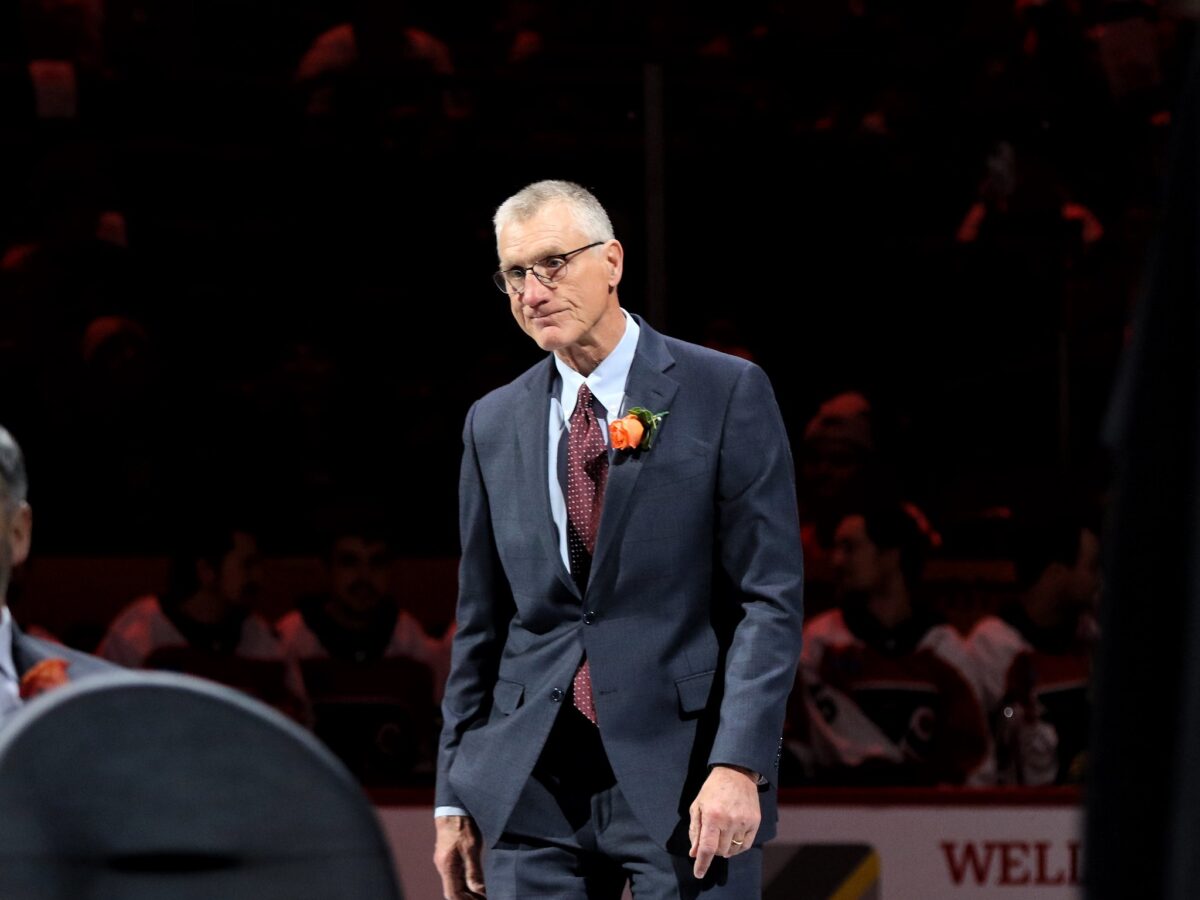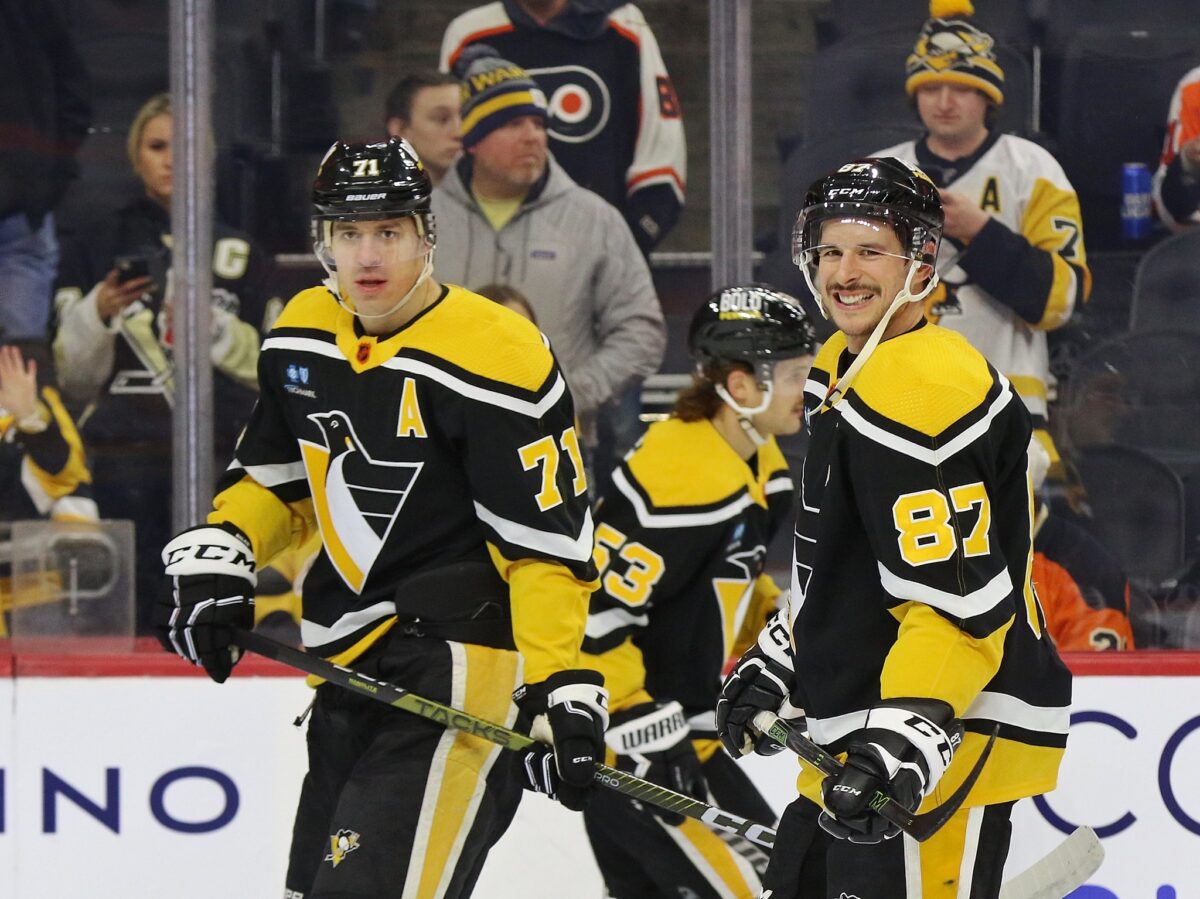Paul Holmgren, on top of having a successful career as a player for the Philadelphia Flyers, also served as their general manager (GM) from 2006-2014. Recapping a perspective on both the good and the bad of his tenure as GM, where should he stand in Flyers lore?
What Holmgren Did Well
After former GM Bob Clarke resigned following a disastrous start to the 2006-07 season, Holmgren was thrust into a difficult position. Eventually finishing with the worst record in the league despite making the playoffs every season from 1994-2006, he was faced with two options: he could give up on the core and rebuild or show his confidence in his players and build around them. Ultimately opting for the latter, he set up a fun era for Flyers hockey.

Despite finishing with the worst record in the league, the Flyers were only treated to the second-overall pick when the prize of the class was one of the best American players in NHL history, winger Patrick Kane. Even with that unfortunate luck, Holmgren built his team around forwards Mike Richards, Jeff Carter, and Simon Gagne—he was pretty successful in doing so.
In the 2007 offseason, Holmgren didn’t miss on a single one of his gambles. He traded just a single late first-round pick for Scott Hartnell and Kimmo Timonen, instantly upgrading his top-six and acquiring one of the best defensemen in franchise history. Still, he wasn’t done there. Signing the biggest fish in free agency, Danny Briere, to an eight-year deal, Holmgren reinvented the Flyers’ roster—they were instantly shot into contention.
Both Carter and Richards became stars in 2007-08, while Briere was a worthwhile addition to the offense. The Orange and Black clinched the postseason with 95 points versus 56 from the season before, completely flipping the script. In the playoffs, they went on a magical run that led to a berth in the Eastern Conference Final. A team led by a couple of young players, the Flyers looked like a team that might be competitive for years to come.
The Flyers once again made the playoffs in 2009, and that’s when they started to see the development of a young Claude Giroux on their roster. He was one of their best players in the postseason as a 21-year-old rookie, but it wasn’t enough to return back to where they were a season before. Then, the team’s run to the Stanley Cup Final occurred, thanks to a splash to land future Hall of Fame defenseman Chris Pronger in the offseason.
The Orange and Black qualified for the playoffs on the last day of the 2009-10 regular season, finishing as the seventh seed in the Eastern Conference. Overcoming the New Jersey Devils, a 3-0 series deficit to the Boston Bruins, and a hungry Montreal Canadiens team, the Flyers returned to the Final for the first time since 1997. While they ultimately fell to the Chicago Blackhawks in a hard-fought series, it was an incredible run that made hockey in Philadelphia interesting again.
The Flyers never returned to the Stanley Cup Final, but they made the playoffs in three of Holmgren’s last four seasons as GM. He failed at winning a championship, but he turned a rather poor situation into an accomplished tenure. With a 307-234-73 record (.559 points percentage) and six playoff appearances in eight total seasons, Holmgren was successful with the hand he was given. Aggressive when necessary and the winner of most of his trades in terms of a value standpoint, that’s worthy of some praise.
The Downsides of Holmgren’s Approach
It was certainly impressive that Holmgren and the Flyers had such a quick turnaround after 2006-07, but that might have been his sign to enter a rebuild. Instead, he entered a retool—it limited Philadelphia’s upside. Trying to find an immediate solution to a myriad of issues including not having a deep enough prospect pool, the result was just a few seasons of success and then a decade of the least successful hockey in team history after that.
In the end, even Holmgren’s best Flyers teams were just not good enough to compete with the juggernauts during that era. This first started in the 2008 postseason when the Orange and Black went up against a young Sidney Crosby and Evgeni Malkin in the Eastern Conference Final. Philadelphia had a 47.9 Corsi percentage (CF%), a 44.1 expected goals percentage (xGF%), and was outscored 14-5 at even strength in their series with the Pittsburgh Penguins. Clearly, the two teams weren’t very close—they only grew further apart over time, with Pittsburgh winning the Stanley Cup in 2009 partially due to a first-round win against the Flyers.

In the Flyers’ appearance in the Stanley Cup Final in 2010, they were also just not as good of a team as the Blackhawks. Not only was that arguably Chicago’s most stacked on-paper roster of the three championships they won from 2010-2015, but they outplayed Philadelphia, too. With a 47.5 CF%, 48.9 xGF%, and being outscored 20-16 at even strength, it is evident that the better team won.
We can always look back and think about if a few things changed, but the reality is that the Flyers did not have the talent required to win the Stanley Cup—they had a worse even-strength xGF% than their opponent in all but one of their playoff series from 2008-2010. They did have a couple of great runs, but pretty much everything went right for them to happen in the first place. Since the run to the Final, it has been a downward spiral for the Orange and Black even with Giroux’s emergence in 2010-11 and the team achieving their best record in the regular season since 2002-03. Swept in the second round by the Bruins, they were still short of being in the conversation with the NHL’s best.
After that sweep, that’s when Holmgren’s approach got somewhat strange. Right as Giroux was starting to blossom into something, that’s when Holmgren decided to completely alter the roster around him. Looking back, he probably should have gone all-in for the budding superstar—Pronger and Timonen, the Flyers’ two best defensemen, were both in their mid-30s entering the 2011-12 season. Instead of giving Giroux a team to win with, he opted to downgrade his roster instead of upgrade it.
Trading Richards and Carter away for a cumulative package that most notably included Jakub Voracek, Sean Couturier, Brayden Schenn, and Wayne Simmonds, you’d probably think that Holmgren won this trade on paper. However, the Flyers had an evidently minimal window to win a Stanley Cup that completely faded the second that deal was made. With the extra cap space, Holmgren signed goaltender Ilya Bryzgalov to a nine-year, $51 million contract to upgrade from rookie netminder Sergei Bobrovsky—we’ll get back to this later.
Related: Flyers’ 7 Richest Contracts in Franchise History
While the Flyers were a great team in 2011-12, they suffered a monumental loss that ended essentially any hope of a championship—Pronger suffered a career-ending injury. Giroux finished fourth in Hart Trophy voting and scored 14 points in six games in the first round of the postseason against the Penguins, but it was only enough to delay their inevitable playoff exit—they fell to the Devils in five contests.
Following that playoff run, everything fell apart for the franchise. Their short window of opportunity slipped away very quickly, with two of their only three defensemen (Pronger and Matt Carle) with a positive relative xGF% (xGF% Rel) in 2011-12 not playing another game for Philadelphia. Even with the continued growth of players like Voracek and Simmonds the following season, Giroux was unable to carry the load with some of the worst goaltending in the league led by Bryzgalov who was bought out that offseason—Bobrovsky, who was traded to make room, won the Vezina Trophy.
The 2013-14 season was Holmgren’s last as a GM before he became President and then a Senior Advisor. He had one more chance to take the hint that the Flyers just weren’t good enough to compete for a title even with Giroux at his peak, but he instead gave a five- and six-year contract to Vinny Lecavalier and Andrew MacDonald respectively—the former struggled and was traded to the Los Angeles Kings, while the latter was bought out. This semi-aggressive approach may have been influenced by then-80-year-old owner Ed Snider, who earned the right to not oversee a rebuild—he sadly passed away in 2016. Regardless of who initiated the approach, it did not set the Flyers up for future success.
Instead of potentially being a great team by this point, the Flyers were mediocre at best. While Holmgren was gone in 2014-15, his impact was still being felt. Philadelphia had no depth, no true first-pairing defensemen on their roster, and had one of the worst prospect pools in the league. Ron Hextall did not do a great job as the next GM, but he was put in a difficult situation and somewhat unsurprisingly failed. He suffered from a lot of indecisiveness, but his case was not helped by his predecessor.
While the answer as to whether Holmgren was a good or poor GM for the Flyers is up to perspective, there were undeniably some positives and negatives to his tenure. Even though he hasn’t been the GM in a decade, the impact of his time is still being felt today—Briere, who he signed, is now serving in his old role.